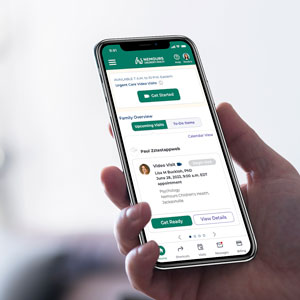Prosthetics
Helping Kids Move and Be Their Best
A pediatric prosthesis is an artificial device that replaces and helps children regain function in a missing body part like an arm or leg. Modern prosthetic devices are made with advanced, lightweight technologies that allow kids to reach their full potential.
At Nemours Children's, our certified pediatric orthopedists and physiatrists (specialists in physical medicine and rehabilitation) understand how children grow and develop physically, emotionally and socially. Our goal is to help every child move and feel their best — and lead an active, independent life.
Conditions We Treat With Prosthetic Devices
We provide individualized care for each child who could benefit from a prosthesis, whether they were born without a certain body part or lost it due to illness or injury. We have special expertise and experience working with children with a wide range of conditions like limb deformities.
Our experts team up to recommend the best prosthetic devices for each child. The prosthetic prescription can be for the lower extremities (foot, above and below the knee) and/or upper extremities (fingers, hands, above and below the elbow).
Prosthetic Services We Offer
We use the latest technologies to measure, make and fit prosthetic devices for children. And children’s rapid growth often means their prostheses will need to be rechecked often. So we provide thorough, ongoing follow-up care.
Because children who need a prosthetic device will often need care from other medical areas, you’ll have access to our entire team of Nemours experts and specialists from a range of departments, including:
Why Choose Us
At Nemours, we work with our onsite doctors and surgeons to fit the ideal prosthesis for each age and stage. Our board-certified experts strive to make sure your child is as functional and mobile as possible as they grow and develop. We want to help your child not just function, but thrive with each new device.
Regional Prosthetic Care Highlights
Delaware Valley/Greater Philadelphia
We offer offer full-service pediatric prosthetic care and on-site orthotics and prosthetics shops at Nemours Children’s Hospital, Delaware (Wilmington). Our program is one of the largest of its kind on the East Coast.
- Regularly ranked one of the top children’s hospitals in the country for pediatric orthopedics by U.S. News & World Report
- Gait and motion analysis lab, which uses a computer to capture a 3D model of your child’s walk
- Pediatric Engineering Research Lab (PERL), working with biomedical engineers and students to research new devices that can help children with orthopedic disorders and limb loss
- Wheelchair clinic and assistive technology to help kids get around, communicate and learn
- Pediatric outpatient therapy services program that’s one of the only in the region accredited by the Commission on Accreditation of Rehabilitation Facilities (CARF)
- Indoor aquatic therapy pool
- Certified hand, occupational, physical and speech/language therapists
- Psychological screening and support if needed
- Patient visits may include prosthetists (specialists who make the prostheses) to help make real-time adjustments if needed
Central Florida
We offer full-service pediatric prosthetic care and on-site orthotics and prosthetics shops at Nemours Children’s Hospital, Florida, (Orlando).
- Latest technologies to measure, make and fit prosthetic devices for children
- Thorough, ongoing follow-up prosthetic care (Children's rapid growth means their prostheses will need to be rechecked often.)
- Advanced wheelchair and assistive technology services to help kids get around, communicate and learn
- Pediatric pain management services (led by a board-certified pediatric anesthesiologist) unique to our area
- Advanced radiology (imaging) services including fetal diagnostics
- One of only a few multispecialty pediatric inpatient rehabilitation programs in all of Florida — and the only one in Central Florida
Northeast Florida
We offer full-service prosthetic care at Nemours Children's Health, Jacksonville (working with Wolfson Children’s Hospital).
- Advanced radiology (imaging) services
- Physical medicine and rehabilitation services and therapies, including physical therapy and occupational therapy
- Close academic and clinical ties with the University of Florida College of Medicine–Jacksonville and Mayo Clinic Florida

